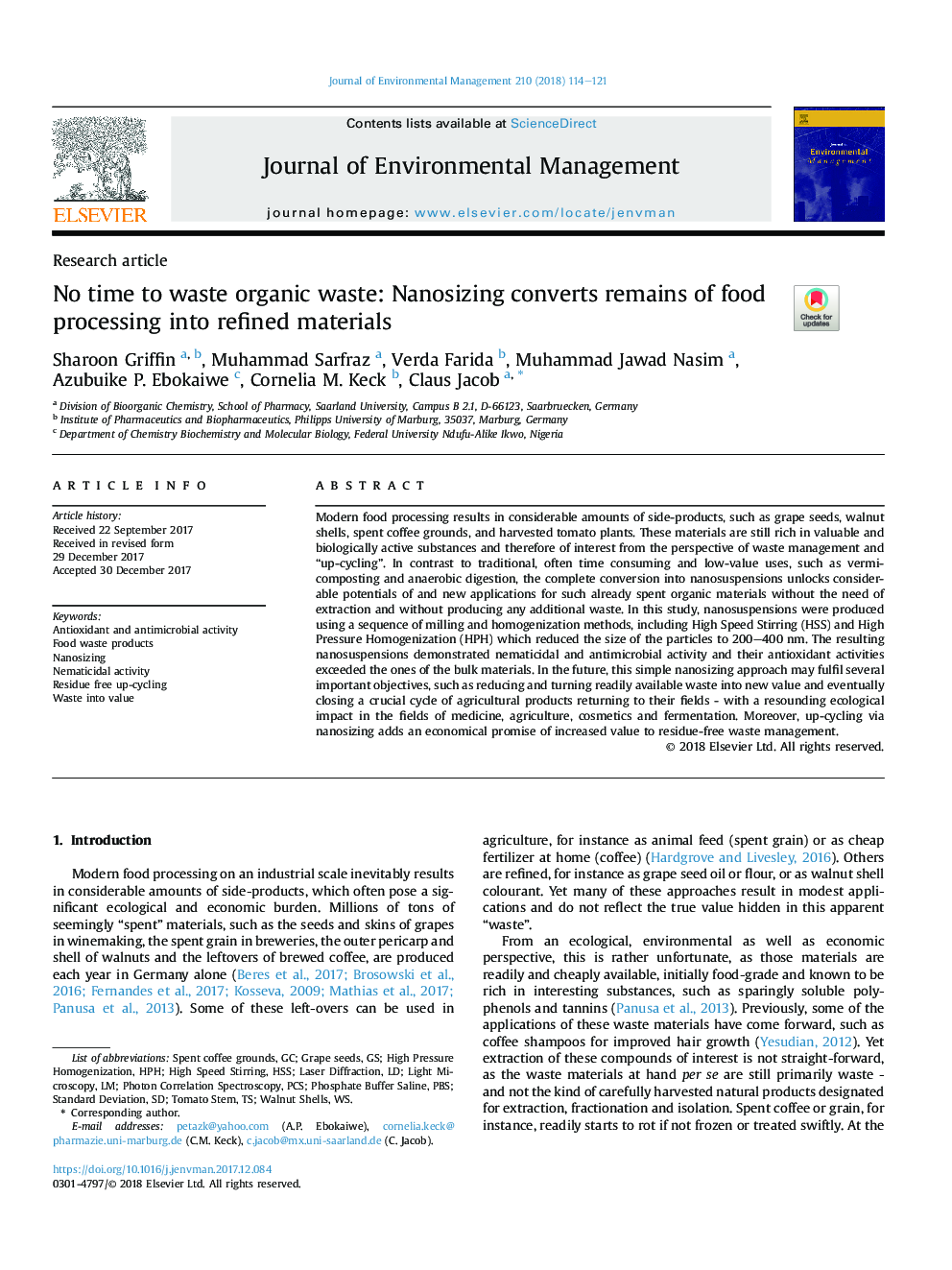| Article ID | Journal | Published Year | Pages | File Type |
|---|---|---|---|---|
| 7478089 | Journal of Environmental Management | 2018 | 8 Pages |
Abstract
Modern food processing results in considerable amounts of side-products, such as grape seeds, walnut shells, spent coffee grounds, and harvested tomato plants. These materials are still rich in valuable and biologically active substances and therefore of interest from the perspective of waste management and “up-cycling”. In contrast to traditional, often time consuming and low-value uses, such as vermicomposting and anaerobic digestion, the complete conversion into nanosuspensions unlocks considerable potentials of and new applications for such already spent organic materials without the need of extraction and without producing any additional waste. In this study, nanosuspensions were produced using a sequence of milling and homogenization methods, including High Speed Stirring (HSS) and High Pressure Homogenization (HPH) which reduced the size of the particles to 200-400Â nm. The resulting nanosuspensions demonstrated nematicidal and antimicrobial activity and their antioxidant activities exceeded the ones of the bulk materials. In the future, this simple nanosizing approach may fulfil several important objectives, such as reducing and turning readily available waste into new value and eventually closing a crucial cycle of agricultural products returning to their fields - with a resounding ecological impact in the fields of medicine, agriculture, cosmetics and fermentation. Moreover, up-cycling via nanosizing adds an economical promise of increased value to residue-free waste management.
Keywords
Related Topics
Physical Sciences and Engineering
Energy
Renewable Energy, Sustainability and the Environment
Authors
Sharoon Griffin, Muhammad Sarfraz, Verda Farida, Muhammad Jawad Nasim, Azubuike P. Ebokaiwe, Cornelia M. Keck, Claus Jacob,
